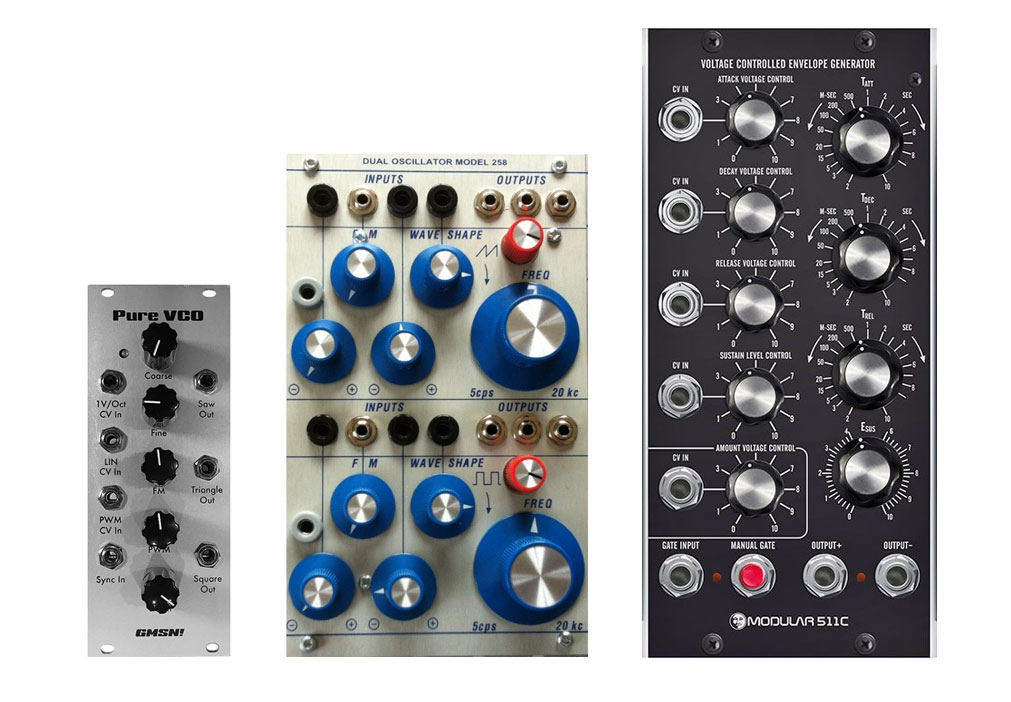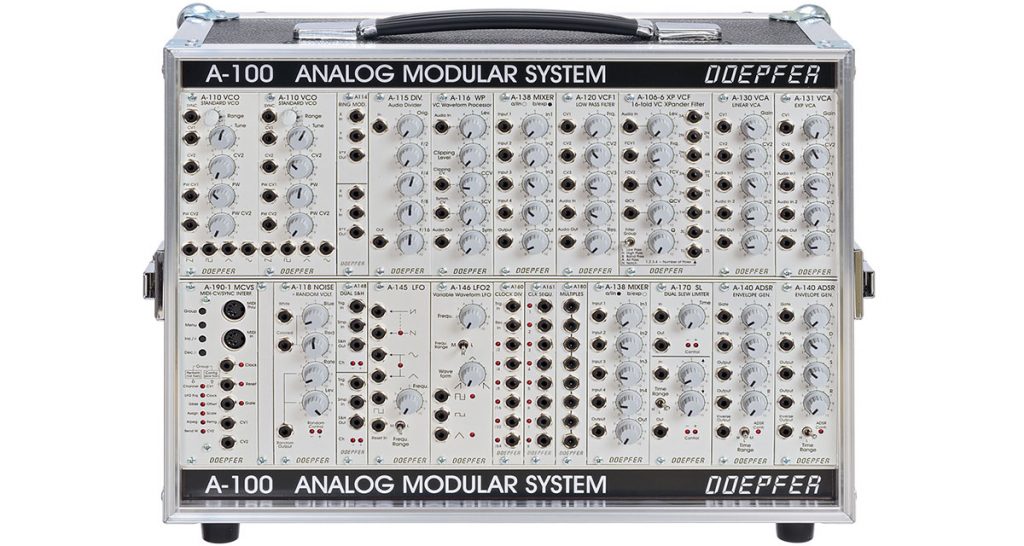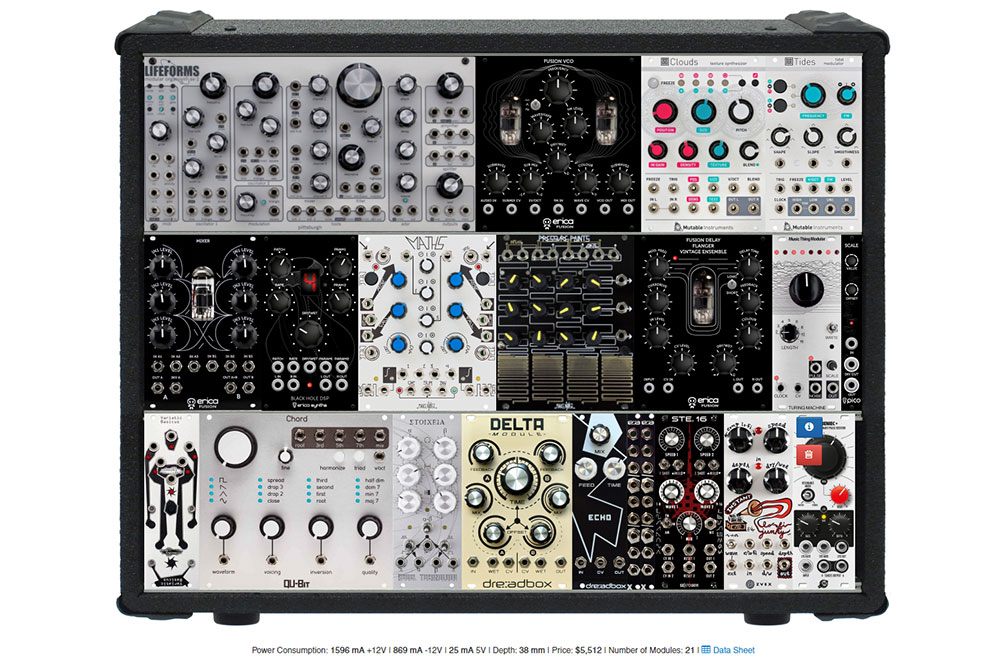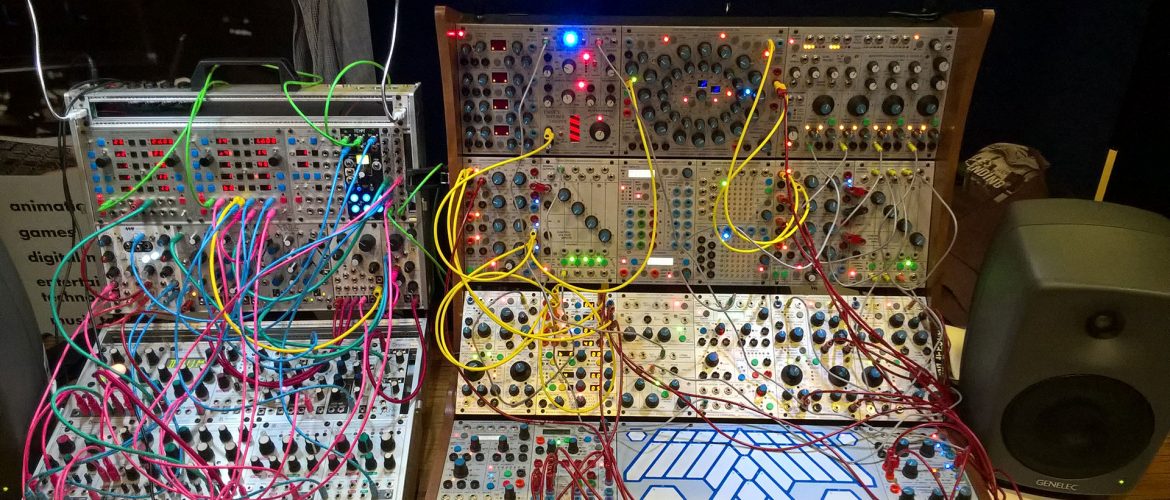So you’ve moved beyond the inquisitive into a desire to get involved in this world of modular. Assuming you’ve thought about your approach (check out my last article on that), have a vague idea of what you’re trying to achieve then we can begin looking at the reality of modular synthesis. So let’s talk about the real things you need to know, the formats, the enclosures and the power supplies and try not to mention the cost. So, let’s start here.
Going Semi-Modular
My article on the Top 5 Modular Synths for Beginners caused a bit of a stir in the online Eurorack community because the list didn’t really contain any true modular modules. That’s not because I didn’t have the first clue as to what I was talking about (honest!) it’s because I don’t believe you can start there – you have to start somewhere else, with a gateway synth, something that will tempt you in but also won’t be a waste of money if you don’t go fully modular. Whomever I spoke to at SynthFest 2016 my suggestions of semi-modular boxes such as the Moog Mother-32 and Make Noise 0-Coast were confirmed again and again – it seems like a sensible approach. A semi-modular synth gives you a completely self contained and working synthesizer. It requires no patching at all to get sound out as it is wired internally (referred to as “normalled” or “normalised”). They then have a bunch of patch points to let you rewire it and connect into other bits of modular or semi-modular gear. It’s not a cop-out, it’s a sensible way into this world that’s the least likely to end up being an expensive mistake.
The only problem with this approach is that not all semi-modular synths can be easily dropped into a modular case. This is the trouble with the excellent Dreadbox Erebus and Make Noise 0-Coast. They are fabulous little boxes but they are not designed to become modules in your modular rack. So once you make the leap into modular they’d have to sit along side, which is terribly untidy, but certainly not the end of the world. The Mother-32, the Pittsburgh Lifeforms and the Roland System 1m can be dropped into a Eurorack case and so they might well be a better choice. Although I know I would have an extremely happy time with the 0-Coast and Erebus in my life. And I may yet do so.
What’s Eurorack? I hear you ask – well it’s all about the case.
It’s all about the case
Once you’ve decided to grow out of or bypass semi-modular and have made the decision to go modular then the first thing you need to think about is the case and power supply. Modules require power. They need either +/-5 or +/-12 volts depending on the module and in fact there’s no real standard. This is one the areas that makes modular difficult. Countless times I’ve seen people advised not to “skimp on the power supply” but rarely do I see anyone reveal what that actually means in terms of a purchase.
You tend to buy a case and power supply together, not always, but it makes a lot of sense. There are all sorts of cases available from walls of oak and walnut enclosures to plastic “lunchbox” cases for a handful of modules. All of them surprisingly expensive. You can of course build your own case from wood, mdf, cardboard or repurposing Ikea drawers – it’s all part of the DIY culture of modular.
Although everything seems to be about Eurorack these days there are three common sizes in modular depending on the format you’re into. There are others but these are the main recognisable three. They all follow the pro audio rack height sizing of the “U” (1.75 inches).
- Moog Unit (MU) – houses the big Moog modular synths and is 5U high. Width tends to be in 8ths of a 19″ rack. MU uses 1/4″ jacks as patch cables.
- Buchla/Serge – this is a 4U format and uses banana plugs, like what you find on some hi-fi systems.
- Eurorack – 3U high, uses mini-jack cables and the width is measured in “HP” or horizontal pitch. It’s also referred to as “hole point” where each hole in the case rails is 1/5 inch apart or 1HP.

Left-to-right Euroack 3U, Buchla 4U and Moog 5U
Moog and Buchla are the godparents of modular and probably far too expensive to even contemplate for most of us. Eurorack on the other hand is a lot more affordable, exploding in popularity and is the format that’s driving and thrilling the synthesis community. So, you’ve guessed it, Eurorack is what I’m going to be focusing on.
Eurorack
Developed by German modular stalwarts Doepfer in 1997, way before modular was becoming remotely cool again. They stuck to it and have around 100 different modules at really good prices. This is the format that’s been adopted by all the recent emerging developers of modular. It’s a good size, it’s reminiscent of the footprint of a desktop, keyboardless synthesizer and you can get a good number of modules into a compact space. The knobs are a good size for fingers, the patch cables not so thick or heavy that they get too much in the way. It hits a real sweetspot for being compact enough for a small case to sit on your desk and there’s room enough for the technology to remain affordable and DIY.

Doepfer A-100 Eurorack in two rows
So when it comes to getting into modular choosing your first Eurorack case is, I believe, the biggest barrier to entry. Because you don’t really know what you’ll be getting out of modular, you don’t know how far you’ll take it and you’re immediately shocked at how expensive cases are. You also probably didn’t realise how DIY it is. How you may have to specify your power supply based upon the modules you want to run. Do you know which modules you want to run yet? So again you can’t really start until you know what you want to get and you can’t really know what you want to get until you’ve started making noises.
The advice you always hear is that you’ll need a bigger case than you think. Get a big case and then double it – they say. Well, cases tend to come in a few sizes: 54 HP for little lunchbox style ones; 84 HP is your desktop synth size and fits a 19″ rack; 104 HP is about the size of a small synth like a MicroKorg and is probably the sweet spot for a good sized system; and then there’s 126 HP for that large console style machine. Of course no one ever uses a single row. Typically you have two or three rows which gives you a solid block of beeping modules, or a space ship console sweep of blinking lights.

Left-to-right: A simple single row skiff; a Doepfer 2 row basic case; Tiptop Audio Mantis; Frap Tools Uno84
As an example a single row (also known as a skiff) of 84 HP in a cheap Doepfer wooden case with a power supply will cost around £166. That’s pretty much entry level. A more common two row 84 HP case would be around £300. Obviously that’s without any synthesizer modules. You’ve also got to consider whether you are staying put in the studio or hoping to take it out to gigs. A two row 84 HP Doepfer case in a flight case style with lid and handle is more like £450. These are the cheap ones. A proper piece of studio furniture with hardwood sides and console angles in three rows of 84 HP, like the Frap Tools one in the image, could be £1500. You can go as far as you like and there are plenty of bespoke options out there. Red Dog actually have a great little article on how to tart up a basic Doepfer case because, after all, part of modular is in the aesthetic and many people build or mod their own cases.
More cases are arriving on the scene and they tend to include decent power supplies these days (whatever that means). TipTop Audio have recently introduced their Mantis case (third from the left in the image), which is two rows of 104 HP for €400. It’s made of injection moulded plastic which reduces weight and cost and has a futuristic look about them, although, of course, it’s not wood.
Powered up
When it comes to powering modules you have a bus board running the back of the case. Modules then connect to it via a 16 pin ribbon cable. The supply tends to be provided by a laptop style brick PSU although internal supplies are becoming more common. When people talk about not skimping on the power supply what they mean is that each module requires a certain amount of power and you need to make sure you have the right amount available for the modules you want to run. Otherwise you may run into weird problems where ranges of modules are being restricted simply because they can’t draw enough power – or at worst it goes bang!
Honestly though, for a couple of rows of 84 HP the included power supply will be plenty.
The most important resource for working this out is a website called modulargrid.net – you create an account and pick a case size. Then you can fill it with every imaginable Eurorack module. Modulargrid.net has graphics and details of every front panel of every available module. You drag and drop them into your case and at the bottom it tells you the total power requirements. It’s completely genius. It will also tell you the estimated cost of your little rack experiment and that will probably blow your mind. Of course you don’t know what you want yet – I don’t know what I want but it’s a useful way to see what’s available. Check out the gallery of other people’s racks to get an idea as to what modules most people choose.

A dream, 5000 dollar, 3 row Eurorack built at ModularGrid.net
Information received
So, to summarise, we’re dealing with Eurorack. The cases cost a surprising amount of money. So, my advice on getting into modular begins with getting to grips with a good semi-modular synth voice. Even if you sell it on later it’s the perfect place to start. For my journey I have a Moog Mother-32. It’s a fabulous little synth, instantly enjoyable, sounds amazing and it’s got MOOG emblazened on the back. I might have also accidentally found myself with a 0-Coast from Make Noise because I think they are extraordinary boxes that can teach me loads about patching sound. The Mother and the 0-Coast will keep me busy for some time as I plan the real step into Eurorack.
I’m of the opinion that you can start small and expand as you need to. I’ve been inspired by a few small modular setups I’ve seen making music on YouTube and Facebook. Some amazing music coming out of a handful of modules. I’m actually less inspired by the huge walls of modular that you see used by people like Richard Devine – he’s amazing, but that’s not something I’ll ever achieve in terms of gear. I want to see what’s possible in a couple of rows of 60 HP.
One thing that struck me when I started this journey and was echoed by DivKid at the SynthFest Modular For Beginners lecture, is that creativity comes through restriction. That a limited amount of modules will force you to use them in creative ways. It all comes back to what I said about how limitless presets ruins our ability to craft our own music. I want restrictions, I want to be disciplined enough to learn the gear I have, and yet add just enough to keep it interesting.
Pestering the community
Just a note on asking advice on forums. As far as I can tell newbie questions and “what modules should I get” type posts are welcomed and generally responded to with humour and helpfulness. Just be respectful and grateful in the general groovy internet way of not being a dick. I would heartily recommend lurking, reading other peoples posts and the responses to the idiot questions so that you don’t end up being that idiot. Here’s some places I’ve found useful:
Facebook Eurorack group – https://www.facebook.com/groups/403937676290574/
Reddit Modular sub-reddit – https://www.reddit.com/r/modular/
The alarmingly names Muffwiggler forum – https://www.muffwiggler.com/forum/index.php
I’m also happy to answer questions or comments left here but I don’t know all the answers yet.
Coming up….
So what’s my next step? Well I want to make a video about what’s inspired me to get into this journey, just to show where I’m coming from. I also want to talk about some software that can give you a flavour of modular before you raid your pension. In there somewhere will be some demo’s with my existing gear and new gear as it appears. And then, I’ll be buying my first case and my first module and we’ll go from there.
